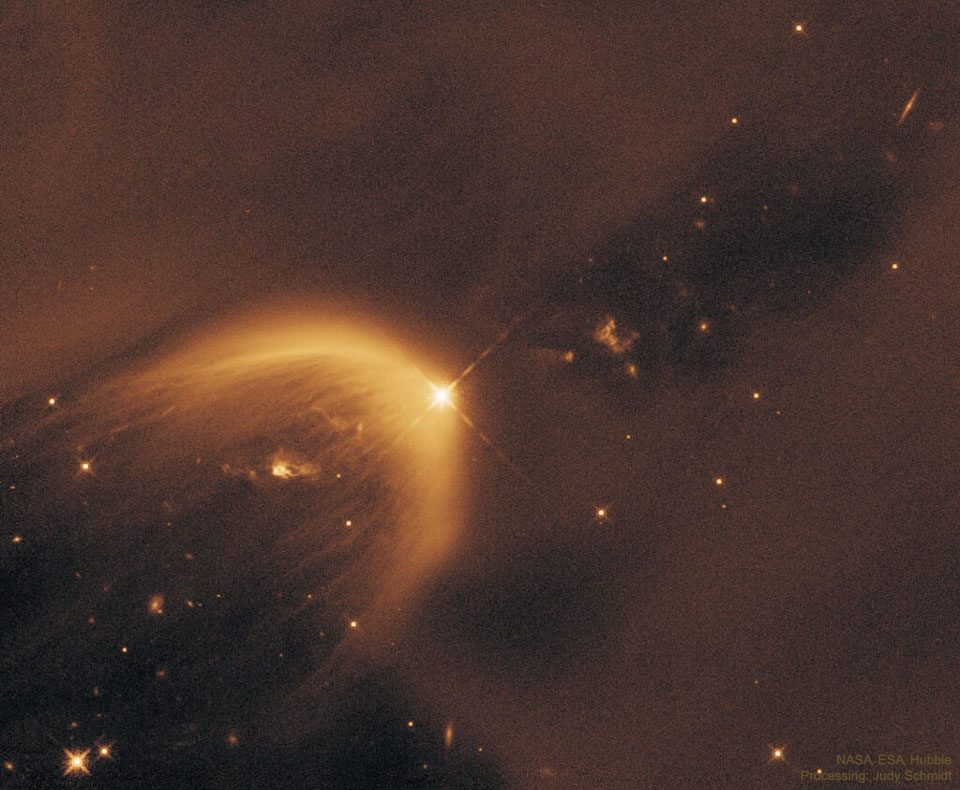2020 May 6
LDN 1471: A Windblown Star Cavity
Image Credit: Hubble, NASA, ESA; Processing & License: Judy Schmidt
Explanation: What is the cause of this unusual parabolic structure? This illuminated cavity, known as LDN 1471, was created by a newly forming star, seen as the bright source at the peak of the parabola. This protostar is experiencing a stellar outflow which is then interacting with the surrounding material in the Perseus Molecular Cloud, causing it to brighten. We see only one side of the cavity — the other side is hidden by dark dust. The parabolic shape is caused by the widening of the stellar-wind blown cavity over time. Two additional structures can also be seen either side of the protostar, these are known as Herbig-Haro objects, again caused by the interaction of the outflow with the surrounding material. What causes the striations on the cavity walls, though, remains unknown. The featured image was taken by NASA and ESA’s Hubble Space Telescope after an original detection by the Spitzer Space Telescope.
Tomorrow’s picture: open space
LDN 1471:恒星风造就的空穴
影像提供: Hubble, NASA, ESA; 影像处理与授权: Judy Schmidt
说明: 这个奇特的抛物线状结构是怎么产生的?这个名为LDN 1471的明亮空穴,是由位在抛物线结构顶点的明亮新诞生恒星所产生的。这颗原恒星正发生恒星物质外泛,而外泛物质冲撞周围隶属于英仙分子云的物质,激发它们生辉。不过,因为受到黝黑尘埃的遮掩,我们只能见到半边的空穴。随着时间推移,恒星风吹就的空穴不停扩大,抛物线结构即为空穴的部分边缘。在原恒星的二侧,还可见到赫比格-哈罗天体,另一种外泛物质和周围物质交互作用的产物。至于穴墙的分层结构是怎么形成的,目前仍然不明。这幅主题影像是由美国航太总署和欧洲航天局的哈伯太空望远镜所拍摄,而这个天体(LDN 1471)则是由斯皮策太空望远镜最早侦测到的。
明日的图片: open space



